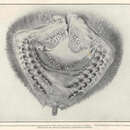mk
имиња во трошки


In an analysis of stomach contents of Red Drum in Galveston Bay, Texas, Scharf and Schlicht (2000) found significant seasonal patterns in diet. The diet was dominated by White Shrimp (Litopenaeus setiferus) during fall and Gulf Menhaden (Brevoortia patronus) during spring. Blue crab (Callinectes sapidus) was an important component of Red Drum diets during both seasons. In the fall, White Shrimp were present in between about a quarter and two thirds of 598 stomachs examined and accounted for between a third and two thirds of the diet. The spring diet of Red Drum was dominated by fishes, which represented over 97% of the diet by number and over 80% by weight. Of these fishes, Gulf Menhaden accounted for 95% of the diet by number and nearly 70% of the diet by weight (the authors note, however, that these totals are somewhat skewed by the fact that a few individual Red Drum stomachs contained as many as 100 to 200 Gulf Menhaden: frequency of occurrence in Red Drum stomachs was only 35%).
The Red Drum (Sciaenops ocellatus) is an important game fish, popular with surfcasters, that is found from Massachusetts (U.S.A.) to northern Mexico. Red Drum travel in schools during their spring and fall migrations. They are known as Redfish in Florida and along the Gulf Coast and as Channel Bass in many other regions. Large specimens (which are usually well under 1.5 meters) are knowsn as "bullreds", while smaller ones are known as "ratreds". (Boschung et al. 1983; Robins and Ray 1986)
The Red Drum is found from Massachusetts (U.S.A.) to northern Mexico (Robins and Ray 1986).
The Red Drum is found along the coast from New York to Florida (U.S.A.), west to Laguna Madre, Mexico. It is most abundant from Florida to Texas. (Boschung et al. 1983)
PCR primers have been developed for Red Drum for a large number of polymorphic microsatellite loci, which may be useful for analysis of stock structure, monitoring and assessment of Red Drum stock enhancement, parentage analysis as employed in aquaculture, and the generation of a genetic map for Red Drum (Karlsson et al. 2008 and references therein).
The Red Drum occurs from the surf zone to offshore waters, depending on the season and an individual's age, and may sometimes enter fresh water (Boschung et al. 1983).
Red Drum may live around 25 to 35 years (Murphy and Taylor 1990).
The Red Drum has an elongate, bronze-colored body that is darker above. Dark centers of the scales form obscure stripes. There is a conspicuous black spot (or spots) on the caudal peduncle. The caudal (tail) fin is rounded in young individuals, but squared off in adults. (Robins and Ray 1986) The 3rd and 4th dorsal spines are the longest. In contrast to some other drums, no chin barbels are present. (Boschung et al. 1983)
In a study of Red Drum in Florida, Murphy and Taylor (1990) found that males matured at smaller sizes than females. Some Gulf coast males were sexually mature after they reached 400 mm, and some on the Atlantic coast were mature after they reached 350 mm (Interpolated lengths at 50% maturity were 529 mm and 511 mm, respectively). Some Gulf coast females were sexually mature after they reached 600 mm, and some on the Atlantic coast were mature after they reached 550 mm (interpolated lengths at 50% maturity were 825 and 900 mm, respectively). The authors note that based on previous studies in Mississippi and Texas, there is geographic variation in the size and age at which Red Drum mature (Murphy and Taylor 1990 and references therein). Spawning peaked on both coasts of Florida from about September through October. According to Murphy and Taylor, Red Drum apparently spawn not only in nearshore areas close to channels and passes, but also over the nearshore continental shelf and in estuaries.
Wilson and Nieland (1994) studied the reproductive biology of Red Drum in the northern Gulf of Mexico. They inferred an 8 to 9 week spawning season extending from mid-August to early October. Both sexes achieved >50% maturity at age 4; however, at 50% maturity males were somewhat smaller than females (males 660 to 670 mm versus females 690 to 700 mm, males 3.4 to 3.5 kg vs. females 4.0 to 4.1 kg).
In a study of Red Drum taken off North Carolina (Ross et al. 1995), maximum observed age and size were 56 years and 1,250 mm fork length (FL) for males and 52 years and 1,346 mm FL for females (fork length is the length from the most forward part of the jaw to the middle of the tail between the lobes). Fifty percent maturity was attained among males by age 2 at 621 to 640 mm FL and among females by age 3 at 801 to 820 mm FL. Spawning occurred from August through early October in estuarine waters of Pamlico Sound and nearshore ocean waters close to barrier island inlets. Ross et al. report that the relative abundance of 20 to 55-year-old Red Drums has declined 90% since 1968-1972.
The Red Drum may reach about 1.5 meters in length and 42 kg (Boschung et al. 1983; Robins and Ray 1986).